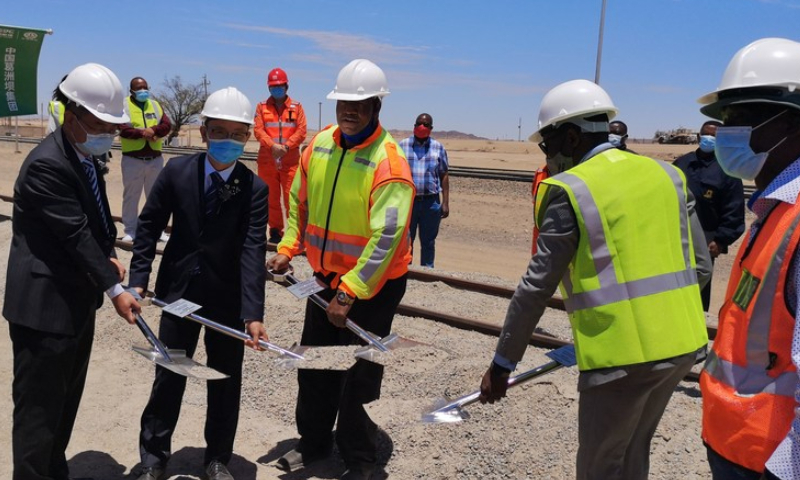
Officials from Namibian Ministry of Works and Transport and China Gezhouba Group Corporation in Namibia break ground for the project of the rehabilitation and upgrading of the railway line between Walvis Bay and Arandis in Arandis, western Namibia, on November 30, 2020. Photo: Xinhua
The restoration of the railway line between Walvis Bay and Arandis in Namibia, with a total length of nearly 110 kilometers, by a Chinese construction company was completed on Tuesday, Xinhua News Agency reported.
The project will be undertaken by China Gezhouba Group Corporation (CGGC). The development is set to enhance 70 percent of the railway network, and make the railway transportation meet the railway transport capacity of the Southern African Development Community (SADC).
Before the restoration project, the railway had been in use for nearly a century, and trains could run no more than 40 kilometers per hour. Now the trains can travel at 80 kilometers per hour after the restoration.
Since the start of the project at the end of November 2020, CGGC has overcome many difficulties such as the COVID-19 pandemic, frequent strong winds and dust, and insufficient supply of local materials to ensure the high quality delivery of the project, said CGGC representative Li Lijie.
It has also provided more than 500 local jobs and trained a number of skilled workers for Namibia, according to CGGC.
The railway restoration project is an important project of the Namibian government's Vision 2030 plan. Upon completion, it will enhance transport capacity and drive economic development along the route, said Veikko Nekundi, Namibia's Deputy Minister of Works and Transport in a recent inspection to the site of the construction.
The project is funded by the Namibian government with 56 percent of its own funds and 44 percent of the loan from the African Development Bank.
Global Times




